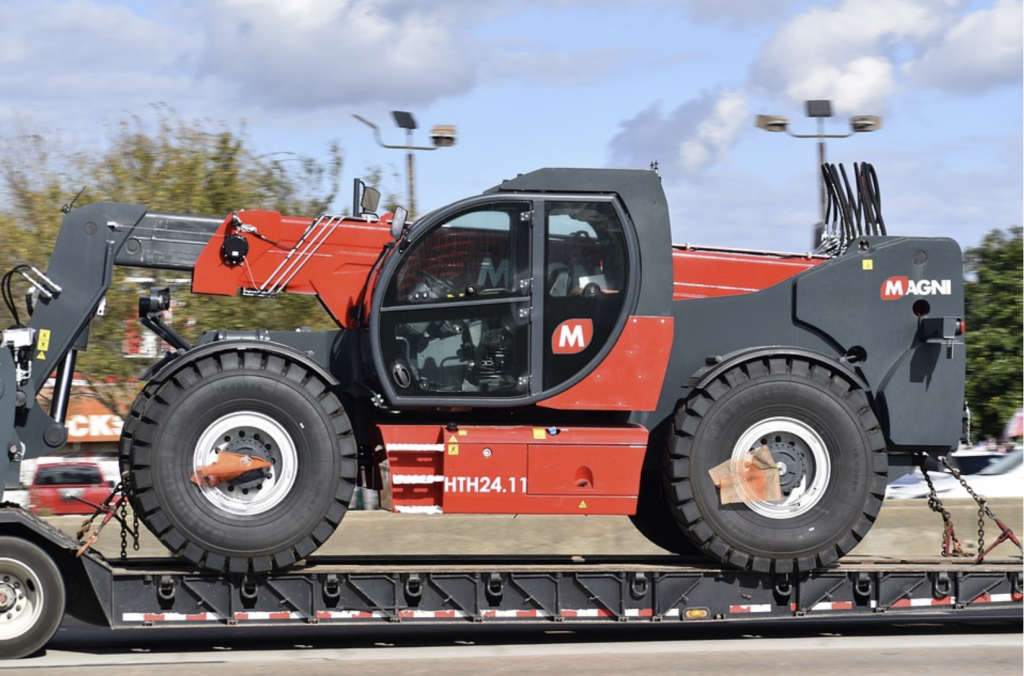
Most people would say that, from time to time, they feel frustrated with their jobs. This is totally natural and is just a normal part of everyday life. After all, if a job were always easy, then it wouldn’t be called work. However, there are times when that shifts towards something a little more significant and potentially problematic. If you start to feel as though your time at work is very unpleasant every single day, then that could well be a symptom of a much larger and more serious problem. This is especially true if you start to feel as though the negativity in your job is coming directly from your employer. Dealing with colleagues who are unpleasant is never fun, but at least it’s direct. The feeling that your employer is perhaps taking advantage of you or is having a direct hand in making your time at work unpleasant is often one that most people don’t want to confront since it can feel as though it’s a problem that’s so big that you couldn’t possibly deal with it yourself. However, your wellbeing when you’re at work, and the happiness you feel in your career are too important to let them fall to one side. With that in mind, here is a simple guide to help you deal with an employer who seems to be trying to take advantage of you.
How can you tell?
One of the toughest things about being taken advantage of by an employer is that it can often be incredibly difficult to be aware that it’s even happening. A lot of the time the methods that employers use are so subtle that a lot of employees don’t even notice, outside of a vague feeling that they are unhappy with their job. But being able to recognize the signs is incredibly important. Here are a few questions that you should ask yourself in order to figure out if your employer is taking advantage of you.
Are you being forced to work overtime?
Every so often, a business will get to the point where things are so busy that people are required to start working some extra hours. This is a pretty standard practice, and it’s hardly a human rights violation. The important thing is that overtime is rare, compensated, and, most crucially of all, voluntary. You should never have to work beyond your contracted hours if you don’t want to or your personal life makes it impossible. However, there are employers who will try to make their employees take on overtime against their will. Sure they can’t explicitly say that they will fire you if you don’t take on overtime, but that just means that they methods that they use are generally more subtle than that. They will do things like denying you overtime when you do ask for it. Or offering benefits to those who take overtime and not offering them to you. These things are subtle, but they send a very clear message to anyone who doesn’t take on extra work. “If you don’t tow the line, then you’re not part of the team.” Employers also make a point to encourage peer pressure among colleagues. They will say that you not taking on overtime makes everyone else’s lives harder, setting up an unpleasant dynamic in the workplace.
Are other people getting paid more than you?
People are often incredibly reticent to discuss money with each other in modern society. The problem is that employers can often take advantage of this to get away with paying people unfairly. Despite the fact that it is against the law, there are plenty of occasions where there’s a pretty significant wage gap between different employees. Get into the habit of discussing your wages openly with one another. Instead of getting angry at each other for getting paid more or less, get angry at your employer for attempting to underpay certain people for doing the exact same work as everyone else. By being open with each other, it makes it that much harder for your employer to pull the wool over your eyes.
What can you do?
Even if you are aware that your employer isn’t treating you fairly, that doesn’t mean that your problems are automatically solved. A lot of people really struggle to figure out what they can do about it. This is often because employers like this tend to bank on the fact that you feel like you have no power while they have all of the power and control. The most important thing for you to understand is that this isn’t true. As an employee, you have rights that need to be respected. If your employer isn’t respecting those rights, then you are definitely in a position to push back against them and confront them about it. It can be scary to stand up to your employer, especially when you’ve spent so long being treated so poorly, but it’s important to stand your ground. Here are some of the things that you can do in order to deal with being mistreated by your employer.
Confrontation
The first thing that you should do if you feel as though you’re treated unfairly is to try and deal with it in-house. Speak to the HR department at your workplace and discuss what you feel is happening and they ways in which you feel like your rights are being violated. They will be able to guide you in the right direction and help you understand if there is anything happening that it in violation of your contract. Of course, this doesn’t mean that you should storm into your boss’s office and demand better treatment. Being aggressive is only going to put your employer in a position where they can frame the whole situation as your fault. The important thing is to express the facts calmly and rationally and to go through all of the relevant channels so that you are as fully protected by the law as possible.
Legal recourse
Of course, there are always going to be situations where you simply can’t deal with these things within the workplace. This could be because the issue is so severe that you need to go straight to legal proceedings, or it could be that the HR department of your business is refusing to acknowledge a legitimate grievance. Either way, taking things to court can be an incredibly intimidating and complex process for a lot of people. It’s a good idea to hire an attorney as early on in the process as possible. This is because trying to wade through pages upon pages of legal jargon by yourself can be incredibly difficult and confusing. Of course, not everyone can afford to pay legal fees. If you’re in that position, then you should check out this guide from Thrivest that can help you understand lawsuit funding, something that can help you afford many of the fees involved in a case against your employer. Once again, the most important thing is to be as rational as possible. Remember, the law is on your side.
Moving on
One of the hardest things for a lot of people is the fact that they might never get the justice that they need. Sure, you can go through all of the right channels but even then there’s a small chance that your employer will be able to get away with treating you, and anyone else, very poorly. A lot of the time the only real way to deal with this is to walk away. If you leave the company, then you’re going to be in a position to take back control of the situation and to go and find somewhere that will treat you better and value you more highly as both an employee and as a person. Even if you do manage to get justice against your employer, there’s a pretty good chance that the entire situation left such an awful taste in your mouth that you’re not going to want to deal with your employer anymore no matter what. When that happens, then you can simply walk away, safe in the knowledge that you’ve potentially created a safer and more supportive environment for anyone who comes in to replace you. You’ve let your employer know that they can’t get away with treating their employees badly or taken advantage of anyone ever again.
Even when you’re fully equipped to face them, dealing with an employer who isn’t treating you fairly can be an extremely daunting experience. The most important thing to remember is that, as long as you’ve done your research, there’s a good chance that the law is on your side. As long as you stay calm and express yourself openly and clearly, you’ll be able to fight against your treatment and, whether you stay with that company or not, you’ll be able to come out of it being treated much better overall. It’s important to remember that it doesn’t matter how big the company that you work for is, each and every individual within that company has rights, and those rights need to be respected no matter what.
Business
How To Future-Proof Your Business With The Right Tools

Running a business is a balancing act between managing today’s tasks and planning for tomorrow’s challenges – and getting that balance right is where you’ll find success. Future-proofing your business might sound like something from a sci-fi show or just one of those words that no one really understands or does, but in this case, it’s a real thing, and it’s a really important thing. You’ve got to be proactive, and the tools and systems you choose now can either set you up for long-term success, or leave you in your competitors’ dust, so you’ve got to get it right. With that in mind, keep reading to find out more.
Think Scalability
The tools you’re using right now might seem – and actually be, in fact – perfect for your current needs, but the question isn’t whether they’re working now (you wouldn’t be using them if they weren’t), but instead it’s whether they can grow with you. In other words, you’ve got to choose tools that won’t fall apart as your business grows, meaning you’ve got to start from scratch with new systems – when you’re growing your business, you’ll have enough on your plate without that as well.
For example, small businesses often rely on simple payment methods in the early days, and although they’re definitely convenient, as time goes on you’ll probably have to rethink things, especially if you’re growing. If you’re still relying on quick fixes, it’s probably time to stop using Zelle for payments because when it comes to business transactions, it doesn’t have the features and security of something more professional.
Automate Where You Can
What’s one of the most precious resources any business owner can have? The answer is time. So if time is so precious, why are you wasting it on repetitive tasks when you could be doing other things if you put some automation in place? Just think of all the time you’d free up if you automated your invoicing, social media posts, email campaigns, and so on – what could you do to make your business better with the time you save?
Not only does automation save time, but it also means there’s a lot less chance for human error to creep in, and that’s got to give any business owner lots of peace of mind and reduce their stress levels – and doing that is always a positive.
Stay Ahead On Cybersecurity
You might have noticed a few (and possibly the numbers are growing) headlines recently about big data breaches – it basically means that customers’ sensitive data has been accessed by hackers, and when that happens, those customers can have issues with identity theft, lost money, compromised passwords, and more.
That’s why it’s so important to invest in good cybersecurity if you want to future-proof your business and make it strong and trustworthy today. Strong firewalls, secure payment systems, data encryption, cloud storage, and good cybersecurity training for your team can go a long way to protecting your business and your customers, meaning it’s going to last a lot longer and get a good reputation too.
Business
What are EDC products, and why should you always have them?

EDC gear includes products that have become indispensable for improving one’s quality of life. These are the tools and implements that can solve everything from simple daily tasks to being vital objects capable of saving lives.
Regardless of the lifestyle you lead, there are countless situations in daily life where you need a tool or item that helps resolve inconveniences or facilitates completing tasks. This is where the category of products known as EDC (Every Day Carry) comes into play. EDC includes a variety of items that are necessary in unexpected moments.
For these tools to truly be useful in daily life, they must be durable and of high quality. For this reason, it is highly recommended to choose selected EDC gear by Onibai.com, an Italian brand with extensive experience in selling this kind of exclusive everyday carry equipment. The brand offers a wide selection of well-crafted, durable products that meet the demands of everyday carry needs.
Knives: essential for multiple situations
Knives, or EDC blades, are among the most essential tools in any EDC kit. In fact, they are often seen as a symbol of someone who is prepared, practical, and functional. Whether it’s opening packages or envelopes, cutting cords or ropes, or other simple daily tasks, a suitable knife can make these activities much easier. Additionally, a good knife can serve as a means of self-defence in case of sudden attacks.
Over time, the design of knives has evolved and diversified. Daily-use knives are now specifically designed for lighter cutting tasks, such as those mentioned earlier. Tactical knives, on the other hand, are made for more intense scenarios. They are stronger and reinforced, often designed for high resistance or self-defence situations.
Urban knives, tailored for city dwellers, are built to meet the needs of individuals in modern environments, so they often feature sleek finishes that complement contemporary lifestyles. Another popular category is multi-tool knives, which are designed to handle a variety of tasks. These knives have the resilience and sturdiness of a 3-inch blade while also fulfilling the precision requirements needed for various EDC tasks.
Other essential EDC products
In addition to knives, there is a wide range of other EDC products that are indispensable in daily life. One of these is, undoubtedly, a reliable wallet. A well-designed wallet needs to be robust enough to withstand daily use while keeping essential items like bank cards, identification documents, and more, safe and in good condition.
Flashlights are also vital components of any EDC kit. These tools are incredibly useful in many situations, particularly in dark environments or emergencies where additional lighting is critical. When selecting a torch, factors such as battery life, size, portability, and brightness should all be taken into account.
Purses, fanny packs, or backpacks also play an essential role in everyday carry. These items are where people store the various EDC products described above. They usually come with several compartments and are available in different sizes and materials, depending on the person’s style and daily activities.
Other items that are part of an EDC kit include beads and cords, Velcro patches, bottle openers, multi-functional key organisers, as well as durable, long-lasting, and stylish pens that adapt to any situation and lifestyle.
An interesting category of EDC products includes stress-relief toys for adults, which provide a means of alleviating daily stress. Popular options in this category include fidget spinners, fidget sticks, stress-relief sliders, poker chips with buttons, and mechanical coins. These items not only serve as a source of relaxation but can also be a fun and effective way to manage anxiety and tension during the course of a busy day.
In conclusion, EDC gear is not just a set of tools but a lifestyle that reflects preparedness, practicality, and a proactive approach to the uncertainties of everyday life. The more equipped you are, the more empowered you will feel in facing the challenges that arise.
Business
The importance of telescopic handlers: innovation and efficiency in load handling
In the field of logistics, efficiency and safety are key aspects for the success of any project. Machines and tools must handle heavy loads and perform complex tasks with precision. In this sense, Magni TH telescopic handlers are the perfect option.

Telescopic handlers are lifting equipment that combine the capabilities of a crane and a forklift, featuring a telescopic arm that can extend and retract to reach considerable heights and access areas that may be difficult to reach manually. Thanks to this versatility, they become essential tools for a wide range of applications, indispensable in multiple sectors.
Today, the telescopic handler industry is constantly evolving, with technological innovations that enhance their functionality. One of the leading companies in this field is Magni TH, renowned for offering high-quality, efficient machinery with a focus on innovation and sustainability. This ensures that their telescopic handlers not only meet current demands but are also prepared for future challenges.
What does Magni TH offer?
Magni TH stands out in the market by offering a wide range of telescopic handlers that adapt to a long list of specific needs. Among their most notable models are fixed telescopic handlers (TH), rotating telescopic handlers (RTH), and heavy-duty telescopic handlers (HTH). They also offer aerial platforms, ranging from fixed models to articulated and rotating versions.
Furthermore, Magni TH machinery is widely recognised for its high-quality standards, due in large part to the selection of top-class raw materials. This attention to detail not only ensures compliance with market safety standards but exceeds them, guaranteeing that every machine is 100% reliable and durable.
Magni TH’s manufacturing process is another aspect that sets them apart. The company combines advanced industrial techniques with a craftsmanship approach, allowing for continuous innovation and enabling them to remain at the forefront of the market. This combined approach not only improves production efficiency but also allows for greater customisation.
In addition to their impressive product line, Magni TH is committed to providing proper advice and training to its customers. The company offers detailed descriptions of its products and services, ensuring that customers fully understand the capabilities and strengths of each machine model.
Magni TH also stands out for its focus on sustainability, reflected in the energy efficiency of each of their machines. This not only maximises user productivity but also ensures environmental responsibility at all times.
Innovation and safety
The use of innovative, high-quality telescopic handlers, like those manufactured by Magni TH, is essential for significantly improving operational efficiency across various sectors. These machines, thanks to their precision and speed in executing complex tasks, help reduce the time needed to complete projects, thereby increasing the overall productivity of companies.
On the other hand, safety is another key aspect when using high-quality telescopic handlers. These machines are equipped with advanced safety systems, such as stabilisers, enclosed cabins to protect operators, and load control systems, ensuring operations are carried out efficiently and reliably. Moreover, their ability to handle loads with precision and care is crucial for ensuring the integrity of products, significantly reducing the risk of damage during transport and handling. This is particularly important in sectors where product integrity is critical to maintaining high-quality standards.
At the same time, the use of innovative telescopic handlers can also enhance a company’s competitiveness. Investing in high-quality equipment allows them to provide services with greater efficiency and safety, helping them stand out in the market. Ultimately, investing in this type of telescopic handler can be considered a strategic decision that can have positive long-term impacts on the sustainability and growth of a company, as adopting advanced technologies demonstrates a commitment to excellence and proactivity, keeping companies at the forefront and allowing them to adapt easily to the many changes in the market.
Versatile Applications of Magni TH
Magni TH telescopic handlers are known for their versatility and ability to adapt to a wide range of applications. Unlike other companies that focus on specific sectors, Magni TH offers its products to any industry that requires load handling solutions. For example, in the agricultural sector, Magni TH telescopic handlers are key tools for tasks such as handling hay bales, transporting fertilisers, and loading livestock. Additionally, their ability to navigate uneven terrain and lift large volumes of material are essential advantages on farms and agricultural operations.
Likewise, the maritime sector benefits greatly from the versatility of Magni TH telescopic handlers. These machines are ideal for storage and cargo handling on vessels and ports, as well as for small routine maintenance operations.
In construction, Magni TH telescopic handlers are one of the most widely used tools, enabling the lifting and positioning of heavy materials such as bricks, cement, and beams. Regardless of the size of the construction project, their ability to operate on difficult terrain and reach high altitudes makes them ideal for any occasion, improving productivity and minimising the risk of accidents.
Finally, telescopic handlers are also widely useful in the industrial and mining sectors. In industry, these machines are employed for material handling in factories and warehouses, while in mining, their robustness, and load capacity make them a perfect option for working in extreme conditions.
-

 Business11 months ago
Business11 months agoHow To Future-Proof Your Business With The Right Tools
-

 Travel10 months ago
Travel10 months agoTravelling from San Antonio to Guadalajara
-

 Travel7 months ago
Travel7 months agoTravel wellness tips for a healthier and more enjoyable journey
-

 Europe5 months ago
Europe5 months agoRecent Books by Boaventura de Sousa Santos: Law, Colonialism, and the Future of Europe










